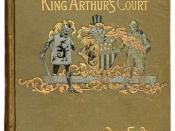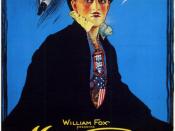In 1889 Samuel Langhorne Clemens, under the pen name Mark Twain, wrote a satirical novel entitled A Connecticut Yankee in King Arthur's Court. Painted in this novel is a fictional, often times comical, look at sixth century Arthurian culture. Twain gives an exaggerated description of "the church"ÃÂ to not only satirize previous Arthurian works, but to give a social commentary of 19th century American Protestantism.
A Connecticut Yankee in King Arthur's Court, ("CYKAC"ÃÂ), is a tale of a man, Hank Morgan, who is from the 19th century and lives in Connecticut. He bumped his head one day and woke up to find himself in King Arthur's Court. After realizing where he was, he then realized that he was going to be put to death for reasons as ridiculous as he found the people to be. Once he finagled his way out of death by establishing himself as a powerful magician, he saw and seized the opportunity to gain power.
He even went as far as to set up an underground "man factory"ÃÂ and recreated the same industry that was prevalent from his 19th century world.
Hank had established himself in power, equal to the king. The Church though maintained a supreme power that far outweighed not only Hank's power, but the king's as well. Therein lied the basis for Twain's depiction of a nobility and Church that ruled and demeaned a nation of ignorant, naÃÂïve, and mindless class of people that Hank refers to as "nothing but rabbits"à(53).
He sees the Church as an oppressor of the people, which does not allow them to know their own spirit or have their own pride. He sees the Church as cunning and resourceful, who "knows more than one way to skin a cat "ÃÂ or a nation"ÃÂ (56).


